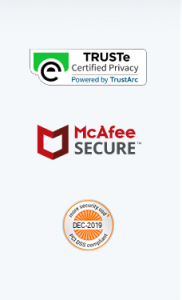Background Information
You are the CEO of an island ecoresort. Your resort services approximately 35,000 guests annually and has a full-time staff of approximately 2,500 people who live on the island. Environmental sustainability is a primary component of your ecoresort’s mission statement. For energy resources, you have no connections to any entities off-island. Thus, your ecoresort must be self-sufficient for all your energy needs. Energy is required to power all aspects of the ecoresort, employee housing, transportation within the island, transportation to/from the island, and more. As a businessperson, you must also save costs or your profit margins will be too thin to make money. How will you effectively and efficiently (Links to an external site.) power your island ecoresort?
What do I do?
To begin, find out the following information:
Watch this learning module’s RLO and obtain background information about the portfolio of energy resources.
As you watch the RLO, reflect on the differences between renewable, non-renewable, and perpetual energy resources.
Within your notes, summarize the pro’s and con’s for each of the energy resources described within the RLO.
Which of the energy resources described within the RLO are most consistent with the needs of an environmentally sustainable society?
What do I create?
Create an Executive Summary (two pages in length) that describes how your island ecoresort will be self-sufficient with energy needs while minimizing financial costs, minimizing environmental harm, and ensuring the well-being of your visitors and staff.
Executive Summary
Your Executive Summary is meant to be engaging, informational, professional, educational, and you must demonstrate your learning. Connect your writing to the information presented within this module’s RLO. For the purposes of this assignment, assume that your audience for this document will be your ecoresort’s Board of Directors. For a worked example of an Executive Summary, please refer to pages 3 and 4 of this document Download refer to pages 3 and 4 of this document.NAVY AND MARINE CORPS PUBLIC HEALTH CENTER
PREVENTION AND PROTECTION START HERE
A Guide to Writing an Effective
Executive Summary
Navy and Marine Corps Public Health Center Environmental Programs
NAVY AND MARINE CORPS PUBLIC HEALTH CENTER
PREVENTION AND PROTECTION START HERE
MISSION
Ensure Navy and Marine Corps readiness through leadership in prevention of disease and promotion of health.
Introduction
Communicating health and environmental information can be challenging for any number of reasons. Occasionally, our audiences may lack a scientific understanding and have a general distrust of the government. Risk Communication theory provides guidance for developing and presenting scientific information in a way that non-technical audiences will better understand and are more likely to accept.
The Navy and Marine Corps Public Health Centers (NMCPHC) Environmental Programs Department has been the Navys subject matter expert for Risk Communication since its inception in 1991. This booklet is one of several products developed by NMCPHC to help Navy scientists and engineers communicate effectively with non-technical audiences.
WHAT is an executive summary?
A technical report is often the result of extensive research, testing, analysis and writing. The results are important and the conclusions or recommendations may affect an entire community, change the way we do things, or lead to further studies or investigations. It is up to you, the expert, to help others understand your technical report.
Public right-to-know legislation means that part of your job is to communicate important information to all of your stake- holders. For your report to be useful, it has to be accessible to many audiences. The Navy, Federal, State, and local Government-regulators, or the public may make important decisions based on your report. Before that can happen, they need to be able to fully understand your methodology, conclusions and recommendations.
A simple and clear executive summary can help non-techni- cal and technical audiences better understand your report. An effective executive summary should consider the audience and give readers a quick summary of the reports content.
Your goal is to write an executive summary that is logical, clear and interesting, and helps build your trust and credibil- ity with your audiences. The next few pages of this booklet will help you meet that goal.
Photo courtesy of Amanda Mills, CDC
1 A Guide to Writing an Effective Executive Summary


